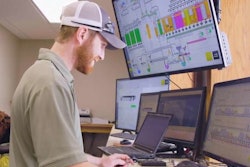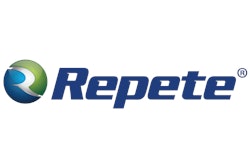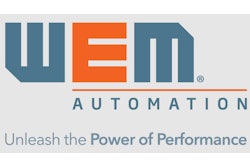Advanced system controls take many functions of day to day feed mill operations out of human hands, reducing labor costs and the risk of error.
Automating major processes also helps facilities achieve maximum uptime, productivity and throughput, while promoting consistent product quality and compliance with safety regulations.
Feed & Grain sat down with experts from today’s leading automation system providers to gain insight on the benefits of implementing automation technology.
Our panel of experts is: Alan Berndtson, director of sales, WEM Automation; Ernie Bollinger Jr., president and CEO, WEM Automation; Jay Davis, business development director, Repete; Fred Olson, software development manager, Beta Raven; Tom Shoen, national accounts manager, COMCO.
F&G: What processes are ideally suited for automation?
Olson: Automation should begin with the process that is going to provide the best return on investment, which is usually batching. The rest of the processes — receiving, grinding, pelleting and load-out — fall in line to complement the batching process.
Berndtson and Bollinger: Most feed mills start with batching and/or pelleting because they typically have the quickest payback. However, on an increasing basis, a large percentage of installations are implementing automation in all areas of the mill because of increased regulatory demands for track and trace, quality control measures and manpower reduction.
Davis: Any process in the plant is a good candidate, provided it has in place properly functioning electrical control devices in the field such as modulating valves, meters, solenoids and limit switches. These plant floor devices enable the equipment to interface with, and be controlled electrically by, the control system.
F&G: What equipment is needed to automate a facility?
Shoen: The basic components of an automation system are a programmable logic controller (PLC) and a PC. Other components may be used subject to the customer’s needs. These can include PDAs or smart phones for remote monitoring and control, bar code scanners for data capture and ruggedized notebook computers.
Olson: PLCs have provided the most change in the industry and are usually the next layer under the process workstations. PLCs bring standardization into the control game by controlling an entire plant, a process, or just a discreet slice of a process. PLCs greatly simplify troubleshooting by pinpointing to the technician exactly what inputs are not being made, provided these inputs are an array of sensors.
Davis: Increasingly, customers are gaining access to data — KPIs and so forth — from a remote location via the Web with mobile phones. Customers can use the mobile interface to monitor the operations of the facility and look for opportunities to optimize the facility.
Berndtson and Bollinger: There has been an increase in the use of hand-add prompting and checkweigh stations in combination with and without bar code scanners. Much of this is attributed to the regulatory demands for track and trace. Smart bar code scanners have a place at a mill for warehouse inventory as product is received and/or transferred into production.
F&G: What kind of support do you provide after installation?
Berndtson and Bollinger: Simply put: 24/7. Our control systems are supported via the Internet, and WEM can remotely access all of the critical components such as the PC and PLC at any time, day or night, to resolve any issue.
Davis: Repete provides 24-hour support with an escalation policy to make sure that all of our customers worldwide are supported. Our highest priority is to maintain the availability of our customers’ systems, which is of utmost importance in the feed industry.
Shoen: COMCO provides its customers with 24/7 access to technical support via a toll free number. We can remotely connect in to the customer’s system to quickly troubleshoot issues.
Olson: Beta Raven not only has the technical expertise to perform the work, but also has the stability to support the system over its lifespan.
F&G: How can automation help promote feed and ingredient safety?
Davis: The integrity and safety of our customers’ product is absolutely critical. Automation gives them the ability to trace product from supplier out to a specific group of animals, and provide for both regulatory compliance, as well as risk mitigation in a commercial sense. One of the goals of traceability is to make sure risk is allocated appropriately to the supplier, and it provides a means of making sure the suppliers are accountable for providing safe product coming into the facility and then ensuring and documenting that the feed manufactured was safe.
We have tools available with our system that dramatically reduces the likelihood of operator error. It requires the operator to scan the right product with the bar code, ensures it is put in the right bucket that corresponds with a particular type of feed, and finally makes sure that bucket goes in with the right batch.
Berndtson and Bollinger: A lot of companies are realizing their old procedures are unable to accomplish what they need to with regard to ingredient safety. With the 24-hour turnaround requirement for recalls, many people simply cannot do that with paper trail systems. But with automation, detailed information is a couple clicks away with all of the production runs, pelleting runs and load-out information, so the track and recall procedure is streamlined significantly. Customers can take what was previously unachievable in even a 24-hour time frame and cut that down to one hour.
Repeatability is another key to feed safety. Once a system is fully commissioned, an automation system consistently performs a repetitious task at high accuracy levels, while never getting distracted. Controls continuously monitor the process without needing a break. We have had customers say they paid for the automation of their batching system within three months just from the reduction of routing errors.
Shoen: User security settings can be used to limit access to information like formulas so that they can only be changed by someone with the proper authority. Also, interlocks can be set up and flushing can be automated to prevent ingredient cross-contamination.
A good automation system maintains a comprehensive audit trail of everything that happens in the feed mill. If a problem is suspected, the user can analyze the audits for alarms or anything out of the ordinary such as manual overrides of equipment.
F&G: How does automation control labor costs?
Olson: Control systems generally reduce the head count in the plant. One operator in front of a workstation can run multiple processes efficiently. The control system never gets sick, takes a day off or complains about doing the same task over and over, year after year, and it does it all at a speed and accuracy level a human could never achieve.
Berndtson and Bollinger: Automation, in some cases, can altogether eliminate an entire job function. For example, we can set up systems that make use of “free labor” — the truck driver. Traditionally, when a truck driver arrived to pick up a load, the operator loaded up the truck. Today, a load-out system can allow a driver to select the load he’s supposed to take and with a few clicks, or touches on a touch screen, the driver can initiate that load-out process without any true mill operator present.
Davis: The impact of automation on labor costs is pretty profound. Beyond the obvious ability of the system to control the process automatically without human intervention, there are some benefits on the administrative side. Our system reduces the need for data entry. The system is automatically able to reconcile your inventory of controlled commodities in process.
Also from a maintenance standpoint, a good system provides diagnostics that are able to reduce downtime associated with labor costs.
F&G: How can automation increase throughput and productivity?
Olson: A control system can run the plant at its limits, while monitoring an array of inputs to keep the plant running safely. The control system monitors for temperatures to know when optimum operating parameters are met, know if parts are failing or even prevent fires. The control system protects expensive motors from overloading, while keeping them operating as efficiently as possible.
Davis: Automation increases throughput and productivity by optimizing the performance of the equipment in the plant. For example, a system running your pelleting process will allow you to run that pellet mill very aggressively by anticipating a potential plug situation that could result in downtime, and respond to it much more quickly than a human being can.
Another good example is the batching system. Accuracy and speed are related. A good batching system will allow you to maintain that high level of accuracy by anticipating and cutting off the flow of a product to a specific bin and reduce settle time and pauses in the process that would incrementally add up to a loss of time.
Shoen: Automating the pelleting process can greatly impact throughput and productivity. We have seen customers increase pellet mill throughput by 5 to 30% with automation. Advanced algorithms ensure fast and accurate calculations for feedback and control, and control parameters are adjusted after every run.
Berndtson and Bollinger: Advanced controls minimize labor, which increases productivity and assures maximum production from each piece of equipment. WEM also provides measurement tools of throughput and productivity so management can actually understand what’s contributing to the productivity, or lack of, and can manage it on a per shift, per employee, monthly or weekly basis.
F&G: How can facility automation lead to more efficient-energy consumption?
Berndtson and Bollinger: By operating equipment such as hammer mills, roller mills and pellet mills at peak throughput levels, the energy consumption per ton produced is decreased, thereby saving energy inputs. Also, shutting down equipment during periods of nonuse can save energy.
Olson: The control system can monitor peak energy usage and sequence very large electric motors so they don’t all start at the same time.
Davis: We can integrate with energy monitoring software and provide data back to the customer so they’re able to make decisions on when to plan production. There are processes — grinding, for example — that can operate during off-peak hours and provide the ground grain requirements for an entire day in one shift of off-hours grinding production.
Our system can stagger the starting of large motors, shut processes down that aren’t producing, schedule off-hours production and provide good information as to how to use energy efficiently.


















